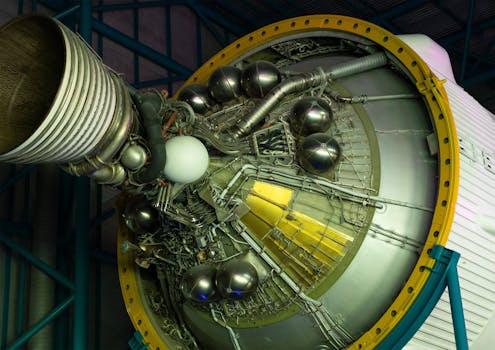The Future is Now: Exploring the Cutting-Edge Innovations in Satellite Telecommunications
The future of satellite telecommunications is now, with innovative technologies and advancements in satellite design, launch, and operation. This article explores the latest developments in satellite telecommunications, including high-throughput satellites, satellite constellations, and advanced propulsion systems.

The Future is Now: Exploring the Cutting-Edge Innovations in Satellite Telecommunications
Satellite Telecommunications is an essential part of modern communication, providing connectivity to remote and underserved areas. The future of satellite telecommunications is now, with innovative technologies and advancements in satellite design, launch, and operation. In this article, we will explore the latest developments in satellite telecommunications, including high-throughput satellites, satellite constellations, and advanced propulsion systems.
The demand for satellite telecommunications is increasing, driven by the growing need for connectivity and the expansion of the internet of things (IoT). To meet this demand, satellite operators are launching new satellites with advanced technologies, such as high-throughput satellites (HTS) and very high-throughput satellites (VHTS). These satellites offer higher bandwidth and faster data transfer rates, enabling the provision of high-speed internet and other broadband services.
High-Throughput Satellites and Satellite Constellations
High-throughput satellites are designed to provide higher bandwidth and faster data transfer rates than traditional satellites. They use advanced technologies, such as multiple spot beams and frequency reuse, to increase capacity and reduce latency. Satellite constellations, such as those launched by OneWeb and SpaceX, consist of multiple satellites working together to provide global coverage and high-speed internet. These constellations are designed to provide low-latency and high-speed connectivity, making them ideal for applications such as online gaming, video streaming, and virtual reality.
Satellite constellations are also being used for Earth observation, navigation, and communication. For example, the European Space Agency’s (ESA) Galileo constellation provides navigation services, while the US Air Force’s Global Positioning System (GPS) constellation provides location information. The use of satellite constellations for Earth observation is also becoming increasingly popular, with companies such as Planet Labs and DigitalGlobe launching constellations of small satellites to provide high-resolution images of the Earth.
Advanced Propulsion Systems and Satellite Design
Advances in propulsion systems are also transforming the satellite telecommunications industry. Traditional propulsion systems, such as chemical propulsion, are being replaced by more efficient and sustainable alternatives, such as electric propulsion and advanced ion engines. These propulsion systems offer higher specific impulse and longer mission durations, enabling satellites to operate for longer periods and reducing the need for replenishment.
Advances in satellite design are also improving the performance and efficiency of satellites. New materials and manufacturing techniques, such as 3D printing, are being used to create lighter and more efficient satellite structures. The use of solar electric propulsion and advanced power systems is also becoming more common, enabling satellites to operate for longer periods and reducing the need for replenishment.
Challenges and Opportunities in Satellite Telecommunications
Despite the many advances in satellite telecommunications, there are still several challenges that need to be addressed. One of the main challenges is the increasing congestion in Earth’s orbit, which is leading to a higher risk of collisions and interference between satellites. The use of satellite constellations is also raising concerns about the long-term sustainability of the satellite industry, with many satellites expected to reach the end of their life in the coming years.
However, these challenges also present opportunities for innovation and growth. The development of new technologies, such as advanced propulsion systems and satellite design, is creating new opportunities for satellite operators and manufacturers. The use of satellite constellations is also enabling new applications and services, such as low-latency and high-speed internet, which are transforming the way we communicate and access information.




